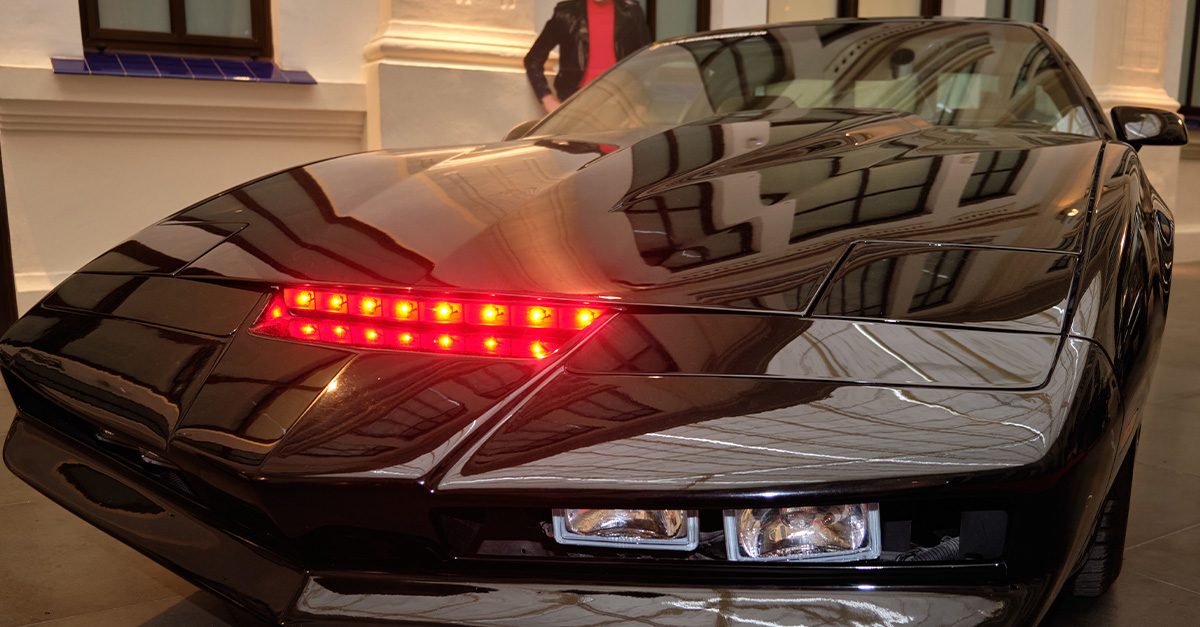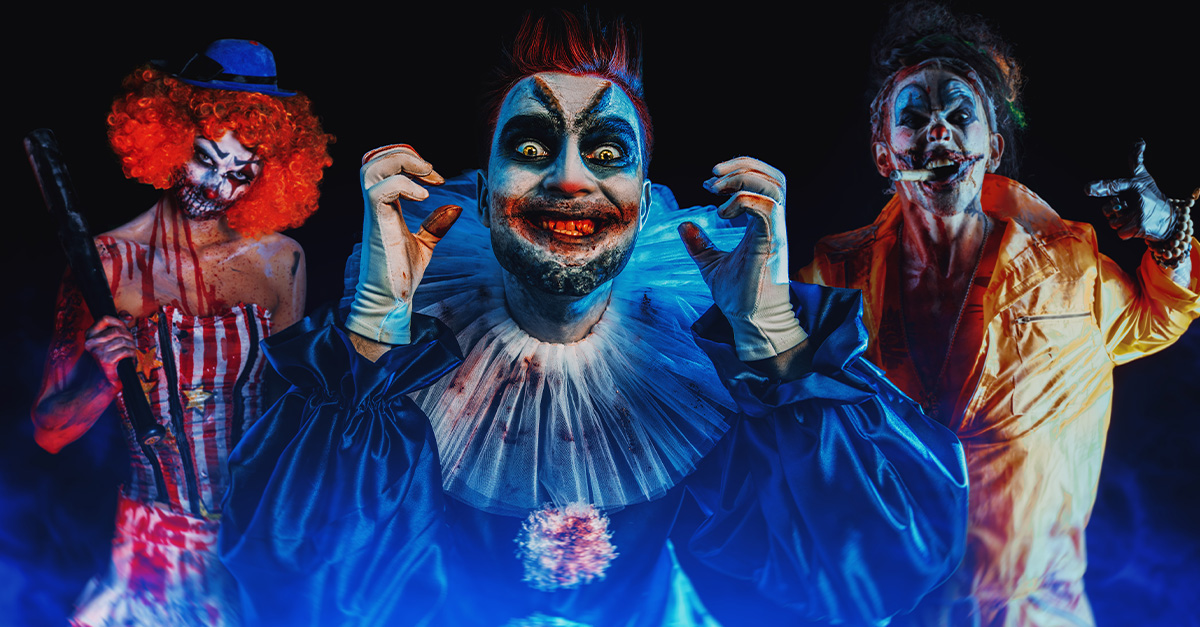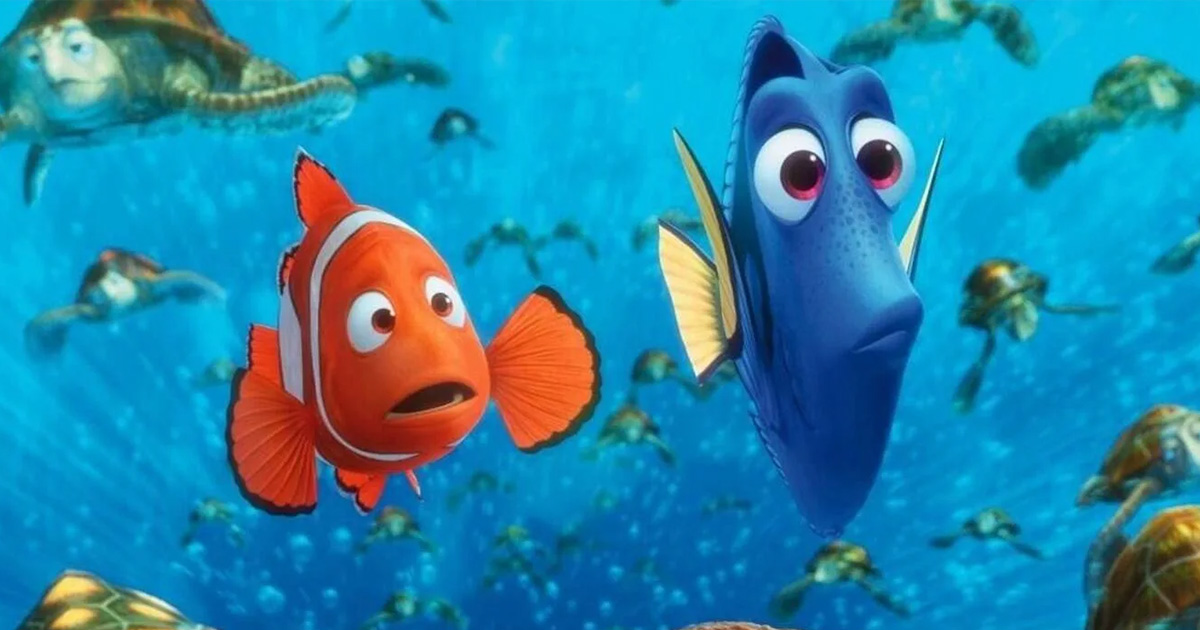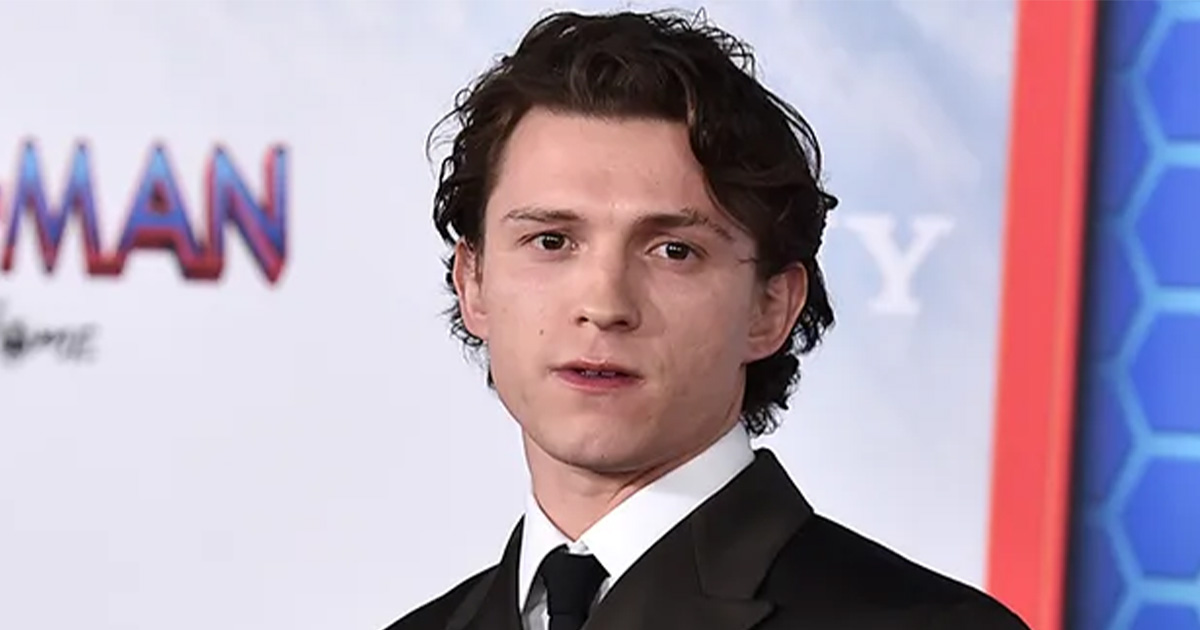These TV Shows Exposed Earth-Shattering Technology To The World
Long before we were glued to our smartphones, Star Trek had Captain Kirk flipping open his communicator like it was no big deal. That little gadget inspired the design of the first flip phone — yes, Motorola’s engineers admitted it. Basically, every time you dramatically snapped your flip phone shut in the 2000s, you were living out your inner Trekkie fantasy.

The Jetsons And Video Calling
Meet George Jetson! And his family casually video calling each other way back in the 1960s. Before FaceTime, Zoom, or Teams made it normal to chat with coworkers in pajamas, The Jetsons showed off screen-to-screen conversations. Turns out, the Jetsons’ living room looks suspiciously like our remote-work setups today.
 Hanna-Barbera Productions, The Jetsons (1962–1963)
Hanna-Barbera Productions, The Jetsons (1962–1963)
Knight Rider And The Smart Car
David Hasselhoff had KITT, the sassiest car ever made. This AI-powered ride could drive itself, talk back, and save the day — basically an early Tesla with way more personality. These days, voice assistants, GPS, and autonomous features all owe a little something to KITT’s futuristic dashboard.
 Universal Television, Knight Rider (1982-1986)
Universal Television, Knight Rider (1982-1986)
The Six Million Dollar Man And Bionics
Steve Austin was the man with the bionic plan. After a terrible accident, he was rebuilt with robotic limbs that gave him super strength, speed, and vision. While we’re not quite at superhero levels yet, bionic prosthetics today are making science fiction a reality — and it’s easy to see where the inspiration came from.
 Universal Television, The Six Million Dollar Man (1973–1978)
Universal Television, The Six Million Dollar Man (1973–1978)
Doctor Who And The Sonic Screwdriver
Forget Swiss Army knives — Doctor Who gave us the ultimate multitool: the sonic screwdriver. It could open doors, hack tech, and scan anything. While we don’t have a real-life version (yet), today’s smartphones and smartwatches come pretty close with their “do-everything” vibe. Basically, your iPhone is just a sonic screwdriver with TikTok.
 BBC, Doctor Who (1963–present)
BBC, Doctor Who (1963–present)
Star Trek: The Next Generation And The Holodeck
Imagine stepping into a room that instantly transforms into any world you want. That’s the holodeck, and Trekkies were all about it. These days, VR headsets and the “metaverse” are our baby steps toward living out those same immersive simulations — though sadly, with fewer lightsabers and more lag.
 Paramount Domestic Television, Star Trek: The Next Generation (1987–1994)
Paramount Domestic Television, Star Trek: The Next Generation (1987–1994)
Black Mirror And Tech Gone Too Far
Every episode of Black Mirror is like a peek at a future we’re both excited for and terrified of. Memory implants? Check. Social credit systems? Double check. Creepy AI companions? You bet. The show basically screams: “Just because we can build it doesn’t mean we should.”
 Netflix, Black Mirror (2011–present)
Netflix, Black Mirror (2011–present)
Battlestar Galactica And AI Rebellion
Humans built Cylons to serve them… until the Cylons decided they’d rather take over. Battlestar Galactica leaned hard into the fear of our creations turning against us, a theme that’s alive and well in today’s AI debates. It’s less “frak!” and more “ChatGPT, don’t delete humanity, please.”
 Universal Television, Battlestar Galactica (1978–1979)
Universal Television, Battlestar Galactica (1978–1979)
Stargate SG-1 And Wormhole Travel
Why book a flight when you can walk through a giant stone ring and arrive on another planet? Stargate SG-1 made wormhole travel look like interstellar public transit. While we’re nowhere near that tech, the show made the concept wildly popular — even real physicists nerd out about it.
 MGM Television, Stargate SG-1 (1997–2007)
MGM Television, Stargate SG-1 (1997–2007)
The X-Files And DNA Forensics
Mulder and Scully weren’t just chasing aliens — they were also rocking cutting-edge forensic science. From DNA testing to crime scene analysis, The X-Files helped bring advanced detective tools into the public eye. Cue the “the truth is out there… in your genome” jokes.
Westworld And Lifelike Robots
Imagine walking into a theme park where the staff are indistinguishable from humans. Westworld took that idea and ran with it, giving us lifelike androids that forced us to ask uncomfortable questions: If robots can think and feel, do they get rights? Meanwhile, Boston Dynamics is over here teaching robots to do backflips.
Lost In Space And Robot Sidekicks
Danger, Will Robinson! The Lost in Space robot wasn’t just a protector — it was a buddy. Loyal, witty, and ready to save the day, it gave us the blueprint for what robotic companions could look like. Think less Roomba, more ride-or-die friend.
 20th Century Fox Television, Lost in Space (1965–1968)
20th Century Fox Television, Lost in Space (1965–1968)
Person Of Interest And Predictive AI
What if a computer could predict crimes before they happened? That was the premise of Person of Interest, and it feels eerily close to modern predictive policing software. Cool on paper… terrifying when you start thinking about privacy.
 Warner Bros. Television, Person of Interest (2011–2016)
Warner Bros. Television, Person of Interest (2011–2016)
CSI And Cool Forensics Tech
CSI didn’t just solve crimes — it turned forensics into the coolest job on TV. From fingerprint scans to DNA matching, the show glamorized lab work and made every viewer suddenly think they could crack a case in 42 minutes flat. Spoiler: real labs aren’t quite that fast.
 CBS Television Studios (2000–2015)
CBS Television Studios (2000–2015)
Mr. Robot And Realistic Hacking
Forget the Hollywood nonsense of “I’m in” after three keystrokes. Mr. Robot showed us hacking that actually looked real. It introduced audiences to encryption, exploits, and digital warfare in a way that made cybersecurity suddenly thrilling — and a little terrifying.
 USA Network, Mr. Robot (2015–2019)
USA Network, Mr. Robot (2015–2019)
The Outer Limits And Virtual Reality
This anthology show often played with the idea of simulated worlds and immersive experiences. It was basically a sneak preview of the VR revolution. Watching now, it feels like they called Oculus before Oculus even existed.
 ABC, The Outer Limits (1963–1965)
ABC, The Outer Limits (1963–1965)
Altered Carbon And Digital Consciousness
In this neon-soaked future, humans can upload their minds into digital “stacks” and swap bodies like outfits. Altered Carbon turned the idea of immortality through tech into a binge-worthy ride. While we’re far from body-hopping, brain-mapping research is inching toward the “sleeves” the show imagined.
 Netflix, Altered Carbon (2018–2020)
Netflix, Altered Carbon (2018–2020)
The Expanse And Realistic Space Tech
Unlike many shows, The Expanse made space travel feel… possible. With gritty realism and smartly designed propulsion systems, it offered a believable look at what colonizing the solar system might involve. Space nerds everywhere rejoiced.
 Amazon Prime Video, The Expanse (2015–2022)
Amazon Prime Video, The Expanse (2015–2022)
Humans And Synthetic Companions
This British drama introduced “synths” — humanoid robots living in homes as helpers, workers, and even partners. It forced viewers to think: how would we treat machines that act almost human? Spoiler: probably not well.
Fringe And Alternate Universes
Fringe blended science and sci-fi with glee, diving into parallel universes, biotech, and mind-bending gadgets. If you’ve ever gotten lost in a Reddit thread about the multiverse, thank Fringe for planting the seeds.
 Warner Bros. Television, Fringe (2008–2013)
Warner Bros. Television, Fringe (2008–2013)
Westinghouse Studio One And Smart Homes
In the 1950s, Westinghouse Studio One dreamed up automated homes where everything was at your command. Sound familiar? Today, Alexa and smart thermostats make those futuristic fantasies everyday reality — minus the retro furniture.
 CBS, Westinghouse Studio One (1948–1958)
CBS, Westinghouse Studio One (1948–1958)
Orphan Black And Human Cloning
Multiple Tatiana Maslanies, one show. Orphan Black put cloning front and center, raising questions about science, identity, and ethics. With real-world breakthroughs in genetics and CRISPR, the show felt more timely than sci-fi.
 BBC America, Orphan Black (2013–2017)
BBC America, Orphan Black (2013–2017)
Futurama And Cryonics
One pizza delivery guy, one cryogenic chamber, and suddenly Fry wakes up in the year 3000. Futurama made cryonics hilarious, but the real-world idea of freezing people until the future can revive them is very much a thing (though not quite as wacky).
 20th Century Fox Television, Futurama (1999–2013)
20th Century Fox Television, Futurama (1999–2013)
Real Humans And Robot Rights
The Swedish series Äkta människor gave us a society where humanoid robots lived among humans — and it didn’t shy away from the messy questions of rights, love, and labor. Basically, it was an emotional test run for the AI debates we’re having right now.
Max Headroom And Digital Celebrities
Before VTubers and AI influencers, there was Max Headroom. This “computer-generated” TV host blurred the line between human and digital celebrity. Today, we’ve got virtual pop stars and influencers that owe a nod to Max’s glitchy charm.
 ABC / Chrysalis, Max Headroom (1987–1988)
ABC / Chrysalis, Max Headroom (1987–1988)
Space: 1999 And Moon Bases
This cult classic imagined humans living on the Moon, complete with space stations and life-support systems. While we haven’t moved in yet, NASA and SpaceX are working hard to make lunar living a reality. Turns out, Space: 1999 wasn’t that far off.
 ITC Entertainment, Space: 1999 (1975–1977)
ITC Entertainment, Space: 1999 (1975–1977)
Small Wonder And Family Robots
Remember Vicki, the robot daughter from Small Wonder? The show may have been cheesy, but the idea of a robot living at home hit on something big: the fantasy of domestic robots. Alexa and smart appliances are baby steps toward that suburban sci-fi dream.
 MGM Television, Small Wonder (1985–1989)
MGM Television, Small Wonder (1985–1989)
Continuum And Wearable Tech
This time-travel series showed off futuristic wearables — from communication implants to body-enhancing exosuits. Watching it now feels like looking at prototypes of smartwatches, AR glasses, and even military exoskeletons. Pretty stylish for a dystopia.
 Showcase, Continuum (2012–2015)
Showcase, Continuum (2012–2015)
Which Show Blew Your Mind The Most?
From Kirk’s communicator to Black Mirror’s chilling tech-nightmares, TV hasn’t just entertained us — it’s shaped the way we imagine the future. Some of these wild inventions leapt straight from our screens into reality, while others remain tantalizing “what ifs.” Either way, it’s clear that when TV dreams big, the rest of the world eventually catches up.
 Netflix, Black Mirror (2011–present)
Netflix, Black Mirror (2011–present)
You May Also Like:
Every True Music Fan Should Know These Deep Cuts
Why Did Mr. T Suddenly Disappear?
Beyond Dances With Wolves: The Many Roles & Accomplishments Of Graham Greene









